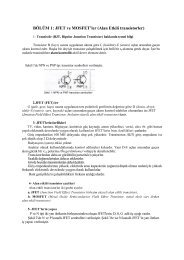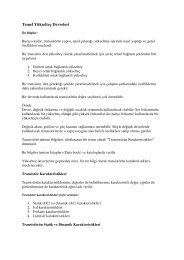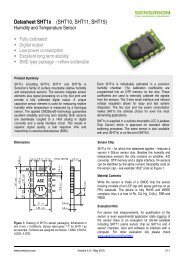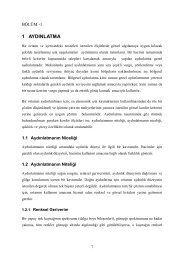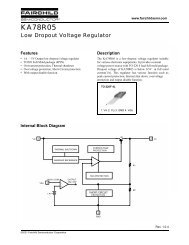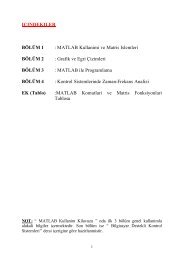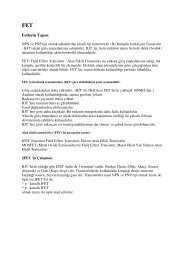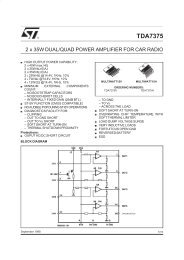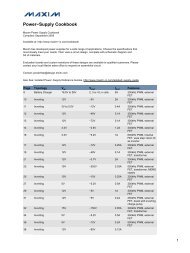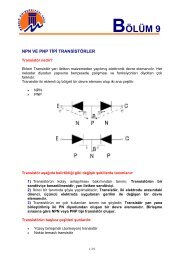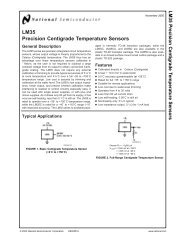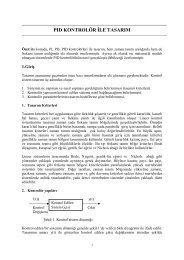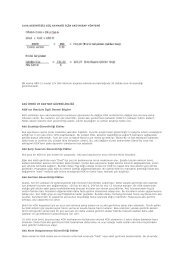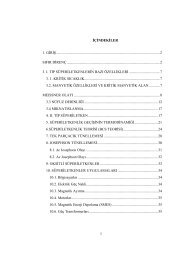tda7294 100V - 100W DMOS audio amplifier - 320Volt
tda7294 100V - 100W DMOS audio amplifier - 320Volt
tda7294 100V - 100W DMOS audio amplifier - 320Volt
You also want an ePaper? Increase the reach of your titles
YUMPU automatically turns print PDFs into web optimized ePapers that Google loves.
TDA7294<br />
INTRODUCTION<br />
In consumer electronics, an increasing demand<br />
has arisen for very high power monolithic <strong>audio</strong><br />
<strong>amplifier</strong>s able to match, with a low cost the performance<br />
obtained from the best discrete designs.<br />
The task of realizing this linear integrated circuit<br />
in conventional bipolar technology is made extremely<br />
difficult by the occurence of 2nd breakdown<br />
phenomenon. It limits the safe operating<br />
area (SOA) of the power devices, and as a consequence,<br />
the maximum attainable output power,<br />
especially in presence of highly reactive loads.<br />
Moreover, full exploitation of the SOA translates<br />
into a substantial increase in circuit and layout<br />
complexity due to the need for sophisticated protection<br />
circuits.<br />
To overcome these substantial drawbacks, the<br />
use of power MOS devices, which are immune<br />
from secondary breakdown is highly desirable.<br />
The device described has therefore been developed<br />
in a mixed bipolar-MOS high voltage technology<br />
called BCD 100.<br />
Figure 15: Principle Schematic of a <strong>DMOS</strong> unity-gain buffer.<br />
1) Output Stage<br />
The main design task one is confronted with while<br />
developing an integrated circuit as a power operational<br />
<strong>amplifier</strong>, independently of the technology<br />
used, is that of realizing the output stage.<br />
The solution shown as a principle shematic by Fig<br />
15 represents the <strong>DMOS</strong> unity-gain output buffer<br />
of the TDA7294.<br />
This large-signal, high-power buffer must be capable<br />
of handling extremely high current and voltage<br />
levels while maintaining acceptably low harmonic<br />
distortion and good behaviour over frequency<br />
response; moreover, an accurate control<br />
of quiescent current is required.<br />
A local linearizing feedback, provided by differential<br />
<strong>amplifier</strong> A, is used to fullfil the above requirements,<br />
allowing a simple and effective quiescent<br />
current setting.<br />
Proper biasing of the power output transistors<br />
alone is however not enough to guarantee the absence<br />
of crossover distortion.<br />
While a linearization of the DC transfer characteristic<br />
of the stage is obtained, the dynamic behaviour<br />
of the system must be taken into account.<br />
A significant aid in keeping the distortion contributed<br />
by the final stage as low as possible is provided<br />
by the compensation scheme, which exploits<br />
the direct connection of the Miller capacitor<br />
at the <strong>amplifier</strong>’s output to introduce a local AC<br />
feedback path enclosing the output stage itself.<br />
2) Protections<br />
In designing a power IC, particular attention must<br />
be reserved to the circuits devoted to protection<br />
of the device from short circuit or overload conditions.<br />
Due to the absence of the 2nd breakdown phenomenon,<br />
the SOA of the power <strong>DMOS</strong> transistors<br />
is delimited only by a maximum dissipation<br />
curve dependent on the duration of the applied<br />
stimulus.<br />
In order to fully exploit the capabilities of the<br />
power transistors, the protection scheme implemented<br />
in this device combines a conventional<br />
SOA protection circuit with a novel local temperature<br />
sensing technique which " dynamically" controls<br />
the maximum dissipation.<br />
8/17



